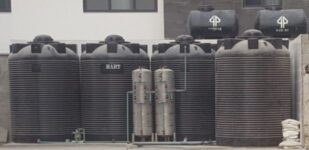Broadly, facility management delivery falls into the following models:
- In-house FM: where the facilities are delivered by abespoke in-house FM delivery team. It is rare for an organisation of more than 250 people to self-deliver all of its facilities services. Often there will be some element of outsourcing, even if it is simply to a local cleaning firm, or a self-employed handyman. Just 6% of facilities services are now delivered entirely in-house. The benefits are flexibility in service delivery and strong communication.
- Single services: using a number of specialistproviders which concentrate on, for example, waste management, concierge, cleaning or While there had been a trend to move away from single services because of the time involved in managing numerous suppliers, there is a belief that best-of breed suppliers can provide an ideal solution for organisations looking for high levels of service delivery, particularly in catering and front-of-house. This is born out by research that shows that single service delivery is now 29% of the market, compared with 22% in 2012. Single services offer improved management information, value for money and access to technical expertise. But it can be time-consuming for the client to manage several suppliers.
- Bundled services: one supplier will manage twoor more services for a client, typically bunched into hard and soft services such as mechanical and electrical maintenance and lifts; or catering, cleaning, reception and security. This can reduce costs for the client providing increased value for money, usually increases innovation and reduces The downside is that the contractor is usually strong in one service line and lacking in another.
- Integrated services: similar to the bundled model,but a number of services are delivered by one organisation under a single management lead. Again this reduces costs and improves value for money but the supplier might not be equally strong in all areas.
- Total Facilities Management (TFM): where the entirematrix of service delivery is outsourced under a single contract to a single provider organisation that may subcontract or self-deliver some or all of the services. This model has seen an increase in popularity over the past few years increasing from 6% in 2012 to 12% of the market in 2016. It allows the client to focus on the core business, provides improved management information and value for money while offering access to technical expertise. However it can leave the organisation dangerously lacking in the intelligent client function.
- Managing Agent: where a consultant is engagedto manage the service provision. This frees up the client’s time as they are not required to manage suppliers and provides valuable supply chain insight, but it can add an extra layer of cost.
- The Integrator: a matured and improved versionof the Managing Agent model, the Integrator sits between the client and supply chain providing business intelligence and an independent, impartial view on supplier performance, finance and cost control, workplace experience and FM compliance together with a strategic approach to the entire estate. The benefits include a single point of information and the ability to choose the best service partner for the job together with increased strategic insight into the estate. This approach is being adopted by organisations with large, complex portfolios.
- A hybrid approach: many organisations areincreasingly adopting a hybrid approach by keeping some services in-house and outsourcing others using any of the models above. This allows the client to design a bespoke FM service delivery model for their particular needs.
There is no right or wrong answer when it comes to choosing an FM operating model. What works for one organisation, will not necessarily work for another. The size, type and location of the estate, the nature and business of the organisation and its culture, together with the standards of FM required, will all have an impact on the decision.
Source
Institute of Workplace and Facilities Management (IWFM) – Choosing-an-FM-operating-model
Kazeem Olugbade, ProFM, is a facility management professional who has extensive knowledge and skills in the subject areas.
Connect with him on these social platforms below.






This is impressive Kazeem. Keep it up